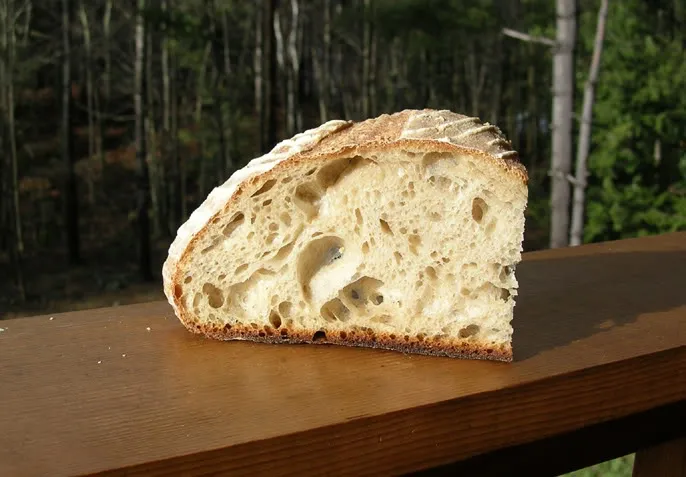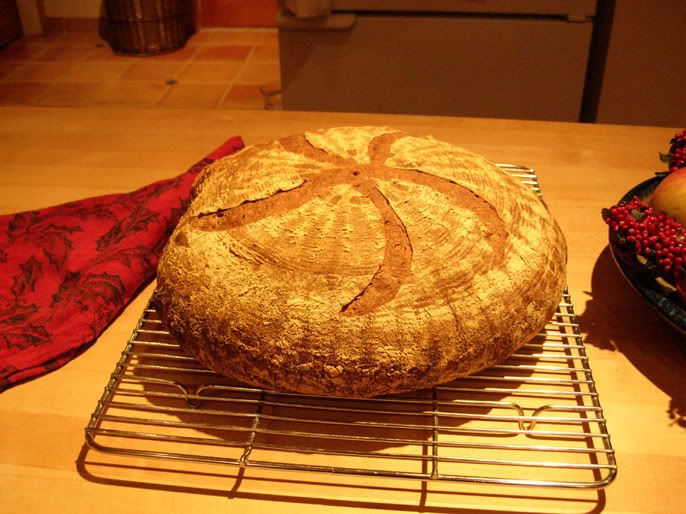This week's baking: Pane Siciliano and 30% whole wheat Leonard Boule
This weekend I made the Thom Leonard boule again (actually 2 smaller boules), but this time made a darker loaf where 30% of the total flour was whole wheat and a little rye. I imagine this combo of flour is more in line with what a Poilane loaf is like. My husband called me from Paris the other day to report on the Poilane loaf he tasted while there, saying it was not really a dark whole wheat bread, rather the crumb was a medium to light color, with even, small to medium holes, not huge holes.


